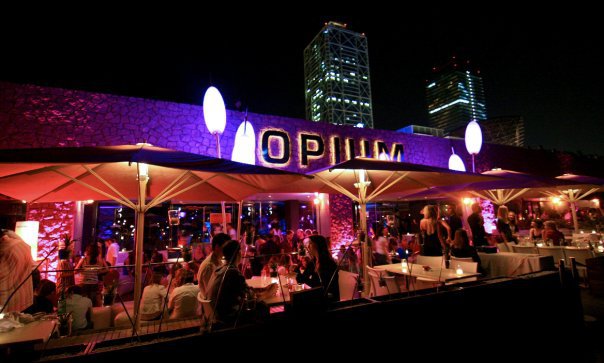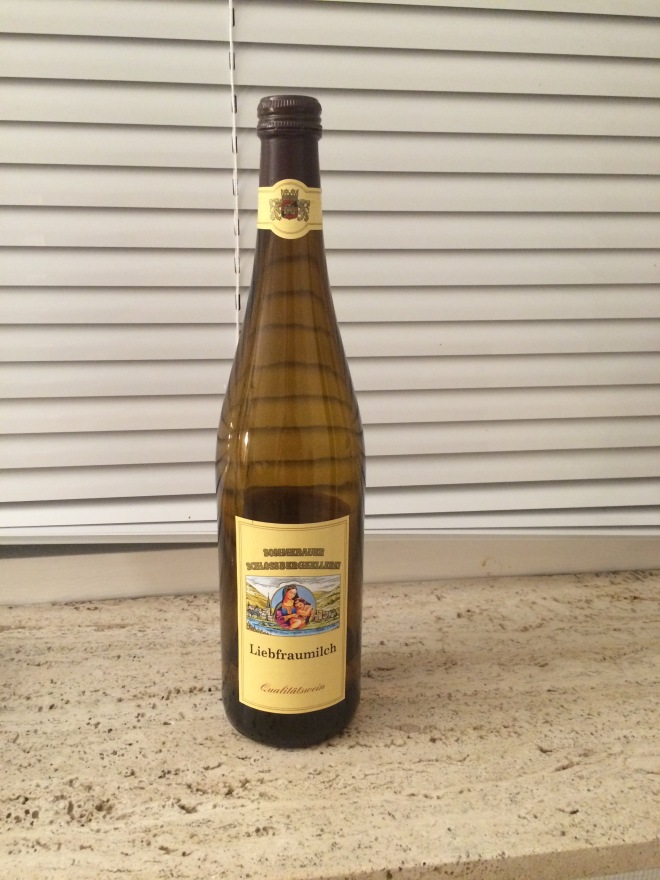Now instead of Danish, I hear English, Spanish, and Chinese everywhere… 
Uncategorized
Pyssynusseligt
Happy Thanksgiving!
Jess and I have been talking about cooking a Thanksgiving dinner for the Brystings all semester. With three days left before I depart for America, it was time to get cookin’.
The day started rather bleakly. Jess had to study for an exam, so I trekked to the grocery store alone. In the rain.
 Food shopping can be full of woes in any foreign country, but it’s especially difficult when you’re hunting for very specific American foods. Like mini marshmallows, for example.
Food shopping can be full of woes in any foreign country, but it’s especially difficult when you’re hunting for very specific American foods. Like mini marshmallows, for example.
But even more common foods can present a problem. Danish brown sugar doesn’t come in light and dark varieties. It’s just this one thing called “brun farin” that tastes exactly like granulated molasses.
Milk, on the other hand, comes in a million varieties. We normally drink minimælk, which is skim milk. Letmælk is 1.5%. Sødmælk is 3.5%. Then as creams go, there’s kaffe mælk, which is like half-and-half, piskefløde, which is whipping cream, and then double cream, which is some 48% nonsense you can only really use to make ice cream or spackle. And we haven’t even discussed the cooking buttermilks, drinkable buttermilks, drinkable yogurts, regular yogurts, and Greek yogurts that all come in tall, milk-like cartons and have pictures of cows on them.
The turkey was definitely the weirdest thing to track down. Turkey isn’t really a thing here. You can find “kalkun” as cold cuts most places, but that’s about the extent of it. Danes seem to think of turkeys as a part of a sandwich but not as a real animal. Hanne had to do a bunch of research to find a place that actually sold whole turkeys, and then go at 6 am to pick it up.
Neither Jess nor I had ever cooked a Thanksgiving meal on our own before, so the whole afternoon was a mixture of winging it and texting Mom.

In the interest of time, money, and oven space, our menu consisted of turkey, stuffing, green beans, sweet potato and marshmallow casserole, and apple crisp with whipped cream. Jakob contributed some Irish coffee to the dessert course.
Thanks to Mom and Aunt Diane for the decorations! Go America. 

Finding Culture in Gore: An American’s Guide to Bullfighting
Spaniards hiss instead of shush. It’s not the soft sh-sound you associate with kindergarten teachers, nor the quick and sharp warning of a mother in a church pew, nor even the wordless reprimand of an aggravated sibling. No, the Spanish hiss is even more effective because, without that mitigating h, it cuts through even a dull roar of Spanish murmuring like a hot knife through mantequilla.
If you attend a bullfight in Seville, you’re going to hear a lot of this hissing sound. And if you’re like me, an unsuspecting yet well-meaning traveller, you’ll make the mistake of underestimating how much Spaniards care about bullfight etiquette rules. Much hissing will probably be directed at you.
In fact, there were a lot of things I underestimated with regard to the bullfighting scene.
The etiquette surrounding Spanish bullfights are severe to the point of ridiculousness. No one may talk during a fight, except for the occasional and perfectly synchronized “olé” when the matador does something truly impressive (as if the whole feat of going head to head with a beast isn’t impressive in its own right). This is why you will hear a lot of Spanish hisses: brightly made-up women and sprightly, tanned gentlemen constantly try to silence their misbehaving bench mates. My own bench mates were two such women and, by the time the first bull went down, they had formed a deeply tense relationship with the three old men sitting behind me.
Even more intense is the rule about attendance. No one may leave during a fight – doing so is actually against Spanish law. You are allowed to leave in between fights, but if you find yourself hard pressed for el baño and the bull is still moving, you’re looking at a twenty-minute wait. Each bull requires at least this much time to die, but not all of it is spent actually dying. A lot of bullfighting is pomp and circumstance, especially when the main matador comes out.
The evening I attended involved six fights in total. Each fight was divided into three parts, called tercios (“thirds”) in Spanish. The purpose of the first third, El tercio de varas, is to let the matador figure out this particular bull’s fighting style. He watches from the sidelines as other men, called banderilleros, make the bull charge at their capes.
Picadores, who sit atop massive horses, are responsible for drawing the first drop of blood. The horse is blindfolded to keep him calm. A full-body suit of something like chain mail guards him. The armor is so tough that the horse can barely walk, so he and his rider parade around the ring in an awkward trot. The bull is enticed to attack the horse, at which point the picador stabs him in the back of the neck with a long, handheld spear. Each of the bull’s attempts to gore the horse results in a three way struggle: the bull tries to lift the horse off the ground with his horns, the horse tries to stand his ground while also remaining still for the rider, and the picador tries to draw as much blood as possible.
The horse v. bull drama was always the most interesting part of this tercio. By this time, each bull had already demonstrated his speed in the ring, but he hadn’t actually run into anything that would push back until he met the horse. Watching two massive animals throw all of their weight against each other is a uniquely humbling experience. Just thinking of the sheer force behind these beasts made me shiver as I sat on the concrete benches in the hot Seville sun. And then I remembered that the poor picador was sitting on top of the whole mess, trying to participate in it.
Most of the time, the horse is able to stand his ground fairly well. Eventually the bloodied bull gives up and focuses his attention back on the banderilleros’ capes. One bull, however, had something else in mind.
This particular bull was the second one of the evening. He was jet black except for dusty scuffmarks around his back legs and a thick, purplish sheen of blood on his shoulders and spine. The front half of his body was so muscular that it looked like it had been coiled in thick black ropes. Saliva hung from his open mouth and dropped to the sand in heavy, lethargic puddles. His stomach heaved in uneven gasps for air as he seemed to contemplate his next attack.
The picadores trotted out in their strange gait and the black bull immediately charged at the horse on the far end of the arena. The picador thrust his spear but couldn’t seem to get ahold of the thick flesh. The spear flailed wildly and he began to kick at the bull with his foot, which had been knocked out of the protective stirrup in all the violence. I thought I could sense the picador’s panic all the way from my seat, but maybe I was only projecting my own stress onto him.
The bull, apparently unbothered by the picador’s assault, continued to ram the horse’s belly. The horse withstood the first few attacks but the bull was gaining more leverage. Each head-butt lifted the horse several inches until, all of a sudden, the horse lost his balance and crashed to the ground. The picador leapt off, apparently unhurt.
The women next to me in the stands had ceased their pedantic hissing and joined in the uproar of panicked shouting. Six men, whom I presumed to be horse handlers, rushed out to the fallen horse to right it, but the bull wasn’t finished. I can only imagine the horse’s terror as he got trampled and gored by some giant beast he could not even see. I felt thankful for his heavy protection and remembered a Sevillian friend telling me earlier that afternoon that bullfighting horses were not required to wear armor until as recently as the 1930s. They used to just die. This one, luckily, at least managed to limp out of the ring.
And speaking of dying, most arenas have a built-in emergency room with full operating get-up to keep the matadors from doing just that. The ones that land the ER most often are actually the banderilleros who, in el tercio de banderillas, encourage the bull to charge directly at them so they can pin two small spears into its back right before the moment of contact.
The final part of the fight is called el tercio de muertes, “of death”. The matador duels the bull one-on-one before finally stabbing him between the shoulder blades with a long sword, piercing the heart. Even a successful stab leaves the bull staggering for another few, agonizing minutes.
It is impossible to ignore the cruelty of this sport. Even the monstrous black bull could no longer keep himself balanced. Every breath was more of a retch followed by short, empty coughs. His entire body was sleek with blood, his face drenched in thick saliva and matted with dirt. His tongue drooped out of his mouth. Though I was at least a hundred meters away, I could plainly see the life leaving his eyes. This bull no longer seemed angry. He just seemed scared.
With a final dagger to the spinal cord, the bull was dead. Everyone in the stands rose and murmured reviews in Spanish. A team of mules was harnessed to the dead bull’s horns and released at a gallop, dragging the corpse around and then out of the ring.
Your questions are the same as mine. How is this practice still allowed in the twenty first century? The Ancient Romans used to watch similar acts at the circus, but Italians are over that now. American plantation owners used to commission slaves to fight to the death, but we’re certainly over that now. What’s wrong with Spain?
It was hard to tell whether this was culture or just animal abuse. The actual maiming of the bulls was needless and unkind. It was also the least glamorous part of the entire affair, at least according to a foreigner like myself.
Murder is murder in any country, speaking any language, in any kind of arena. Killing an innocent animal did not strike me as particularly “Spanish”. The other elements of the event, however, did demonstrate interesting parts of Spanish culture, so I couldn’t help but wonder, why not stick to those parts?
For example, it is customary for men and women of all ages to dress up in traditional Spanish garb. For men, this generally meant nicely tailored suits and straw hats. For women, this meant full flamenco dresses, embroidered shawls, a complicated braided hairdo complete with real floral decorations, and intricate fans. Stepping into the stands was like stepping back hundreds of years – a cliché, yes, but all the more accurate because none of the costuming was done ironically. By behavior alone, one would never guess that Sevillian men and women did not dress like this every day of the year. Those who did not wish to dress up, or simply couldn’t afford a custom outfit, dressed to the nines nevertheless. My companions and I scarcely got by with our sundresses and sandals.
I think I’m glad I went. I would not go again. Go, if you can handle it, but I anticipate you coming to the same conclusion once you’ve seen it. This sport, bit of culture, crime, or whatever your conscience wants to call it, may not (hopefully won’t) exist in years to come. For better or for worse, maybe experience it while you can.
-from Creative Travel Writing class
La Plaza de Toros

We sat in Section 12, which was in direct sunlight. They actually lower prices for seats that can’t get any shade, but even with this discount we paid something like 40 euros for our tickets.
These aren’t the horses who get attacked, don’t worry. These ones kind of just walk around and then leave before the action starts.

In between fights, the spectators stand up to air out their sweaty rear ends. Laugh away, but Section 12 doesn’t mess around.
I’m already getting nostalgic
The Coffee Collective
The Coffee Collective has the best coffee in Copenhagen, or at least that’s what some magazines and websites have claimed. And I must agree.
This is the unassuming decor of their Nørrebro joint. They have a booth in Torvehallerne (the Glass Market) and another, much more impressive shop in Frederiksberg.
The mark of an excellent cappuccino is the perfect thirds: one third espresso, one third steamed milk, one third frothed milk. It’s a very simple recipe but so easy to wreck.
The espresso: A lot of coffee shops don’t take the time to properly clean the espresso machine after every use, so each fresh pull tastes progressively more burnt. The girl who worked here told me that they taste the espresso at least once per hour to make sure it’s right. She seemed eerily calm, considering how much espresso she’s probably had during her shift.
The milk: Steamed milk isn’t too hard to figure out, especially if you’re using a more full-bodied milk or cream because it’s already so thick. Frothed milk, however, can be a real pain in the neck. If you’re fed up, you can use skim milk because it’s much lighter and thus easier to whip up, but the drinker will always be able to tell that you cheated. Good frothed milk is like good champagne: the air bubbles should be really really small. It shouldn’t look like soap suds on top of your drink.
This is a coffee roaster, and it takes up most of this shop’s floor. They used to roast their own coffee right here up until about a month ago, when the operation was moved to a larger building close by. I don’t know how coffee roasters work but I feel like this would have been really noisy.
 I also learned about aeropressing. This is a relatively new technique for making coffee that, as the girl described, is somewhere between a French press and a drip filter. Aeropressing yields an oilier cup of coffee because the filter has bigger holes and more of the real-deal coffee stuff can pass through. The result is a much richer, more intense flavor, not for the faint of heart. Consider it the cabernet sauvignon of the coffee world.
I also learned about aeropressing. This is a relatively new technique for making coffee that, as the girl described, is somewhere between a French press and a drip filter. Aeropressing yields an oilier cup of coffee because the filter has bigger holes and more of the real-deal coffee stuff can pass through. The result is a much richer, more intense flavor, not for the faint of heart. Consider it the cabernet sauvignon of the coffee world.
The Iberian Peninsula p. 2
Portugal, and especially Lisbon, is famous for its Fado music. Fado is a highly personal and stylized combination of solo singing, by either a man or a woman, and instrumental accompaniment. Performances are very community based and can be hard to get into if you’re not a local, but we were lucky to have a guide from our hostel.
 He brought us to a cozy little café in the middle of Alfama, the old part of the city, around midnight. The café was bustling with people drinking beer and eating olives, and then the lights went off. The audience went silent. An old man wearing a suit and tie began to bellow out a soulful, not quite tuneful melody. A guitar and what looked like a small oud (a Middle Eastern lute) plucked and strummed in different rhythms, almost duelling. After nearly ten minutes, the lights came on and applause filled the café.
He brought us to a cozy little café in the middle of Alfama, the old part of the city, around midnight. The café was bustling with people drinking beer and eating olives, and then the lights went off. The audience went silent. An old man wearing a suit and tie began to bellow out a soulful, not quite tuneful melody. A guitar and what looked like a small oud (a Middle Eastern lute) plucked and strummed in different rhythms, almost duelling. After nearly ten minutes, the lights came on and applause filled the café.
Due to its interpretive nature, Fado music can sound very different depending on who is performing. I’ve heard some that sounds just like a Middle Eastern [SOLO] and some that borders on opera. The underlying sound is always one of longing. Our guide thought this was because the Portuguese people have a long history of loss and sadness, the result of many wars, many people who never returned from sea voyages, and, of course, the earthquake.
The earthquake of 1755 has become the marking in the middle of Portugal’s timeline: there were things that happened before the earthquake, and things that happened after.
Lisbon and everything nearby was shaken up by a quake of magnitude 9. Pretty much everything crumpled to the ground. Many thousands of people died, and almost everyone lost their homes and businesses. Right after the earthquake came a massive tsunami, which rushed into the city so fast that, according to an uncredited wikipedia quote, even people on horseback had to break into a gallop to save their own lives. It also happened to be All Saints Day, so there were candles everywhere. The fires destroyed anything the earthquake and tsunami missed. Talk about Murphy’s Law…
At the request of nearly every who’s heard of Portugal, we took a day trip to Sintra. 
Sintra is chock full of magical estates, gardens, and hilly terrain. In the interest of time and money, we chose to walk around Quinta da Regaleira. This is the one castle you can walk to from the main train station, saving you about twenty minutes and five euros each way. And it’s not like you’re skimping on the wow factor…


This is “Alexander from Roma”. He was also staying in our hostel and one night decided to treat everyone to homemade amaretto sours. Recipe: muddled mint leaves, brown sugar, orange juice, lime or lemon, and amaretto. Delicioso. 
The Lisbon Oceanarium – the largest indoor aquarium in Europe. It was pretty large. 
Sunfish, aka a giant floating rock.
A puffin, totally freaking out. 
Some penguins, totally not freaking out. 
These chill mussels. We later ate their brethren for dinner. Mmm. 
We tried to eat this guy later for dinner (well, not this exact one, he’s pretty protected in this tank). Spider crab with crab-guts-and-beer dip is a Lisbon delicacy. Unfortunately, our waiter had already conned us into wolfing down some expensive octopus salad as an appetiser so by the time the crab came around, we were all too broke to afford it. 
The Iberian Peninsula p. 1
Two weeks ago, Christy, Krissi and I took on the Iberian Peninsula. Our first stop was Barcelona. We visited the Sagrada Familia, a massive cathedral designed (but never finished) by Antoni Gaudí.
 As we stood in front of it, debating whether it was morally acceptable to skirt the 14 euro entrance fee by pretending to be Catalan church-goers, we suddenly became aware of the strange belted people surrounding us.
As we stood in front of it, debating whether it was morally acceptable to skirt the 14 euro entrance fee by pretending to be Catalan church-goers, we suddenly became aware of the strange belted people surrounding us.
And led to this…
 And finally evolved into giant human towers that looked like this!
And finally evolved into giant human towers that looked like this!
Teams of different colours competed in this little “casteller” festival.
No one fell while we were watching, but castellers fall all the time, and there was a nice fleet of ambulances waiting behind the Sagrada Familia the whole morning just in case. You can watch this video to get a good look at the sport. Prepare to get the music stuck in your head for years!

 Mom might remember this cathedral from when we visited Barcelona a couple years ago… this was the view from our hotel room. There were no street musician pianists in the square this time, though, sorry Mom!
Mom might remember this cathedral from when we visited Barcelona a couple years ago… this was the view from our hotel room. There were no street musician pianists in the square this time, though, sorry Mom!
 Every European city seems to be filled with these labyrinthine alleyways, but somehow they always have a different feel to them. For instance, this street could never be in Copenhagen, or in Milan, or in Seville, but it’s hard to pin point exactly what the difference is.
Every European city seems to be filled with these labyrinthine alleyways, but somehow they always have a different feel to them. For instance, this street could never be in Copenhagen, or in Milan, or in Seville, but it’s hard to pin point exactly what the difference is.
 Tiny 1 euro espresso cup. Still took me half an hour to drink because I am a child and I can’t drink beverages if they’re too hot.
Tiny 1 euro espresso cup. Still took me half an hour to drink because I am a child and I can’t drink beverages if they’re too hot.
 Inside the Santa Maria del Mar cathedral. I didn’t get yelled at for taking pictures this time!
Inside the Santa Maria del Mar cathedral. I didn’t get yelled at for taking pictures this time!
 Late afternoon sunshine at the pier. Christy couldn’t contain herself.
Late afternoon sunshine at the pier. Christy couldn’t contain herself.
But it’s no surprise why.
 We stumbled into a shop that sells Hawaiian shirts by the kilogram. The back part of the shop was 100% a strip club. There weren’t signs or anything, but you kind of just knew.
We stumbled into a shop that sells Hawaiian shirts by the kilogram. The back part of the shop was 100% a strip club. There weren’t signs or anything, but you kind of just knew.
 Our hostel got us free access to Opium, the most famous nightclub in Barcelona. It was the coolest place any of us had ever been, so we took a mirror selfie to accentuate our dweebiness and commemorate the whole experience.
Our hostel got us free access to Opium, the most famous nightclub in Barcelona. It was the coolest place any of us had ever been, so we took a mirror selfie to accentuate our dweebiness and commemorate the whole experience.
 Krissi has some pictures of the actual club, but until I get them from her, here’s something to give you an idea of this beachfront establishment:
Krissi has some pictures of the actual club, but until I get them from her, here’s something to give you an idea of this beachfront establishment:
 La Boqueria, a huge marketplace right off La Rambla. All you can see is heads because I am small and that’s all I could see, too.
La Boqueria, a huge marketplace right off La Rambla. All you can see is heads because I am small and that’s all I could see, too.
The view from a hike up Park Güell
 Ended the day cheering on some some paddle boarders caught in the surf and watching beach volleyball.
Ended the day cheering on some some paddle boarders caught in the surf and watching beach volleyball.
 Sevilla, Step 1: churros con chocolate
Sevilla, Step 1: churros con chocolate


 This week in Seville was a week-long festival called Ferias, which meant a lot of flamenco dresses, a lot of horse drawn carriages around the city, and a lot of bullfighting. The bullfight we attended was a pretty monumental part of the trip, so I’m going to reserve that for a separate post, with the exception of this picture. We wanted a picture of the three of us in front of the bull ring, but the woman we asked thought we wanted a picture with her and her costumed friends. Awkward…
This week in Seville was a week-long festival called Ferias, which meant a lot of flamenco dresses, a lot of horse drawn carriages around the city, and a lot of bullfighting. The bullfight we attended was a pretty monumental part of the trip, so I’m going to reserve that for a separate post, with the exception of this picture. We wanted a picture of the three of us in front of the bull ring, but the woman we asked thought we wanted a picture with her and her costumed friends. Awkward…
 The Real Alcázar de Sevilla – part mansion/museum, part gardens.
The Real Alcázar de Sevilla – part mansion/museum, part gardens.
 The museum part talked about the Moorish influence on the Alcázar and on Seville in general.
The museum part talked about the Moorish influence on the Alcázar and on Seville in general.
It was a really big deal when they learned how to make normal, everyday pottery look like gold. They considered this to be alchemy.
 The stonework in the courtyards was so intricate it reminded me of lace.
The stonework in the courtyards was so intricate it reminded me of lace.


And then there were the gardens… the most beautiful place I’ve probably ever seen.


El Espacio Metropol Parasol, aka Las Setas, aka the Mushrooms. Built in 2011 by Jürgen Mayer-Hermann. It is supposedly the largest wooden structure in the world and cost something like 100 million euros to complete.
Walking along the top of it was like riding a very slow roller coaster.



For our last night in Spain, we led ourselves on a self-directed tapas tour. We hit up several different places in search of the most interesting potatoes, the most reasonably priced jamón ibérico, and the best sangria. This was from the last place we went to, a Michelin-recommended restaurant called Uno de Delicias. The best tapa was this pork chop with caramelised onions, a roasted pepper, and melting brie. The sangria was also out of this world. The best part was the fruit at the end, which tasted like someone had put a magic spell on a Dole fruit cup.
 Some loose horses on the streets of Seville. No one seemed to own them…
Some loose horses on the streets of Seville. No one seemed to own them…
 After two hours of a night’s sleep, Christy and I arrived in Lisbon! Krissi would meet up with us again later that night, but we were on our own for the day.
After two hours of a night’s sleep, Christy and I arrived in Lisbon! Krissi would meet up with us again later that night, but we were on our own for the day.
 Found a wine shop where a nice old Portuguese man gave us a tasting of several different port wines. We’re both in the wine tasting class at DIS, so this was very exciting for us.
Found a wine shop where a nice old Portuguese man gave us a tasting of several different port wines. We’re both in the wine tasting class at DIS, so this was very exciting for us.
 There are churches every fifteen feet in Lisbon. Here’s the inside of a really big one, Sé de Lisboa.
There are churches every fifteen feet in Lisbon. Here’s the inside of a really big one, Sé de Lisboa.
The view from several miradouros, or lookout points

 The Arch at the end of Rua Augusta. Our hostel was about one block further up the road than you can see in this picture.
The Arch at the end of Rua Augusta. Our hostel was about one block further up the road than you can see in this picture.
Mercado da Ribeira
10 things you’ll find in every Danish house
1. Water boiler
2. Pålægschokolade
3. Ikea glassware
4. Towels that have little loops so you can hang them up from the middle
5. iPhone chargers
6. Soft boiled egg spoons and cups
7. Carlsberg and/or Tuborg
8. Remoulade
9. Tiny packages of cold cuts
10. Cheese cutter thingies
With thanks to Google Images for these stock photos.
It was the kind of wine you felt like you were supposed to shake before using.
Meet the 20 Kroner Wine. This is the Danish equivalent of Two Buck Chuck, except I guess it’s more like $3.00. Then again, so is Two Buck Chuck, now.
































































